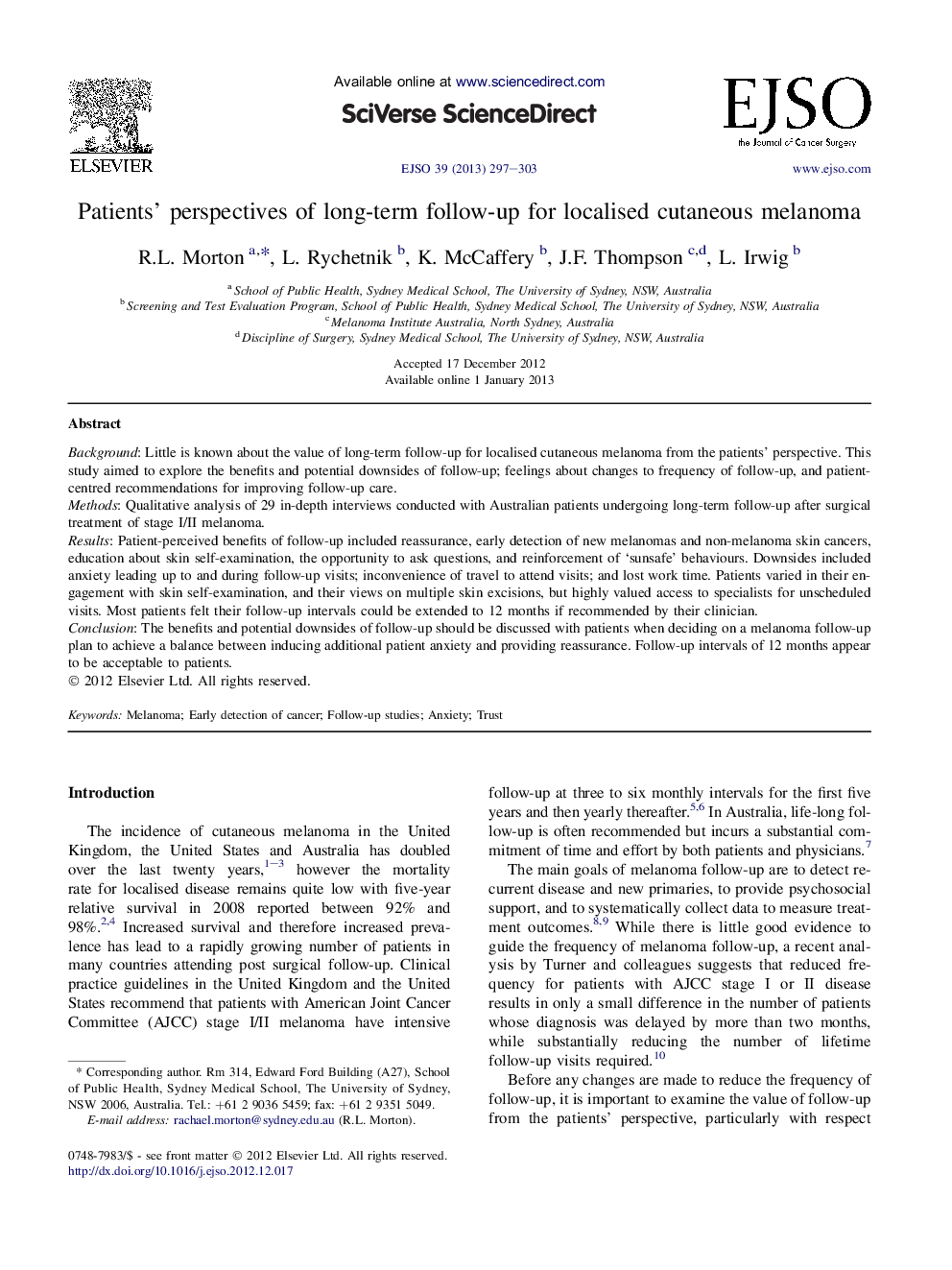| Article ID | Journal | Published Year | Pages | File Type |
|---|---|---|---|---|
| 3985648 | European Journal of Surgical Oncology (EJSO) | 2013 | 7 Pages |
BackgroundLittle is known about the value of long-term follow-up for localised cutaneous melanoma from the patients' perspective. This study aimed to explore the benefits and potential downsides of follow-up; feelings about changes to frequency of follow-up, and patient-centred recommendations for improving follow-up care.MethodsQualitative analysis of 29 in-depth interviews conducted with Australian patients undergoing long-term follow-up after surgical treatment of stage I/II melanoma.ResultsPatient-perceived benefits of follow-up included reassurance, early detection of new melanomas and non-melanoma skin cancers, education about skin self-examination, the opportunity to ask questions, and reinforcement of ‘sunsafe’ behaviours. Downsides included anxiety leading up to and during follow-up visits; inconvenience of travel to attend visits; and lost work time. Patients varied in their engagement with skin self-examination, and their views on multiple skin excisions, but highly valued access to specialists for unscheduled visits. Most patients felt their follow-up intervals could be extended to 12 months if recommended by their clinician.ConclusionThe benefits and potential downsides of follow-up should be discussed with patients when deciding on a melanoma follow-up plan to achieve a balance between inducing additional patient anxiety and providing reassurance. Follow-up intervals of 12 months appear to be acceptable to patients.
